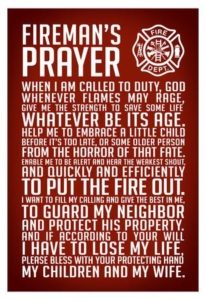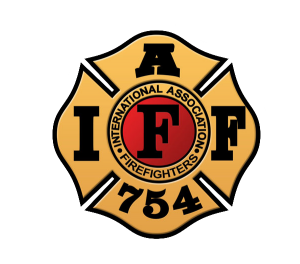The following are Local 754 members recognized as Line of Duty deaths. Some deaths occurred due to injuries sustained in the performance of their duties. Others are recognized having contracted a fatal illness in the course of their career. There have also been losses due to the continued challenge of mental health and wellness in the fire service. Many are cancer diagnoses due to occupational cancer.
J. Saunders – Prior to May 20, 1894
C.E. Ainsworth – May 20, 1894
W.C. Eckles – February 1, 1906
W.M. Matthews – March 27, 1929
A.C. Wooten – August 23, 1955
L.D. Blanton – January 6, 1956
O.W. Dennis – January 31, 1956
W.W. Young – May 26, 1957
A.H. Sulli – November 30, 1958
A. Miranda – September 27, 1964
P.M. Freeman – March 10, 1969
O.E. Calderon – May 7, 1969
R.L. Ryals – April 22, 1974
F.G. Warner – August 4, 1981
I. Royal – August 9, 1981
J.K. Barker – January 21, 2001
J. Billek – March 6, 2012
R. Alcover – February 8, 2015
M. Bunch – May 5, 2015
S. Ladue – September 6, 2017
R. Hobart
R. Dittman

Located in the shadow of Pikes Peak in Colorado Springs, the Memorial honors the sacrifice made by IAFF members who have given their lives in the line of duty.
“Men and women who, regardless of their station in life, were united in the most important way: they were fire fighters. May we always tell their stories, honor their memories, and celebrate their lives.”
-Ed “Edzo” Kelly, General President IAFF
Fallen Fire Fighter Memorial 2023 – IAFF
Fire fighter occupational cancer is a term that refers to the increased risk of developing and dying from certain types of cancer due to exposure to carcinogens (cancer-causing substances) during firefighting. According to the International Agency for Research on Cancer (IARC), the cancer agency of the World Health Organization (WHO), firefighting is classified as a Group 1 carcinogen, meaning there is sufficient evidence for cancer in humans. Some of the cancers that are most commonly associated with firefighting are mesothelioma, bladder cancer, lung cancer, oral cavity cancer, esophageal cancer, large intestine cancer, and kidney cancer. Firefighters can be exposed to carcinogens through breathing, skin contact, or ingestion of contaminated substances. Some of the sources of carcinogens for firefighters include combustion products, asbestos, diesel fumes, formaldehyde, benzene, and perfluoroalkyl substances (PFAS). Fire fighter occupational cancer is a serious health concern that requires prevention, early detection, and treatment strategies.
Firefighter Cancer Support Network | Together we can…
According to a study, more firefighters and police officers died by suicide in 2017 than all line-of-duty deaths combined. Law enforcement officers and firefighters are more likely to die by suicide than in the line of duty. Occupational stress in first responders is associated with increased risk of mental health issues, including hopelessness, anxiety, depression, post-traumatic stress, as well as suicidal behaviors such as suicidal ideation (thinking about or planning suicide) and attempts. There are insufficient data on suicides and mental health issues among these workers. Many first responders may consider stress to be ‘part of the job’ and feel that they cannot or should not talk about traumatic events and other occupational stressors. Perceived stigma around mental health problems or concerns over impact on employment (i.e. being labeled “unfit” for duty) may lead first responders to not report suicidal thoughts.
IAFF Center of Excellence – Rehab & Treatment for Fire Fighters (iaffrecoverycenter.com)

